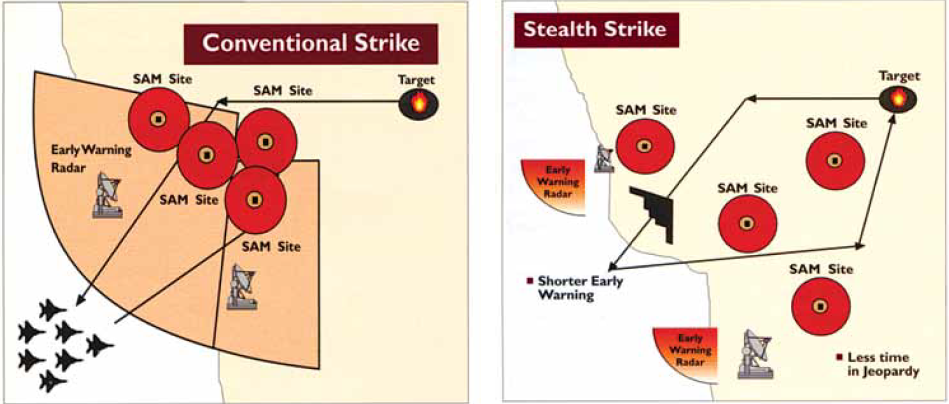No, the F-35 has very good manoeuvrability, in contrast to what most of the armchair experts say. Most pilots who actually fly F-35
praise its dogfighting capabilities & are impressed by it’s performance.
The F-35 is actually kinematically similar to the F-16, having similar acceleration/energy retention of a F-16 (combat loaded) while significantly higher Angle of Attack –
50° AoA limit (
tested upto 110° AoA) compared to
26° AoA limit on F-16.
The F-35 actually gets the best of both worlds by combining the superior energy retention or acceleration of a F-16 with greater nose-pointing ability of a F-18. Here’s a F/A-18 pilot after his first flight in the F-35:
It was like flying a Hornet with Four engines!
His point being that the F-35 can afford to operate at high Angle-of-Attack and low airspeed, but that it will regain the airspeed quickly when needed.
Here’s a Norwegian F-35 pilot’s observations (He has over 2,200 hours in F-16):
“The F-35 reacts quicker to my pedal inputs than the F-16 would at its maximum AOA (the F-16 would actually be out of control at this AOA). This gives me an alternate way of pointing the airplane where I need it to, in order to threaten an opponent. This «pedal turn» yields an impressive turn rate, even at low airspeeds.”
“It is a peculiar feeling to be flying the F-35 at high AOA. I can pull the nose up to where my feet «sit» on the horizon and still maintain level altitude. I’m also impressed by how quickly the F-35 accelerates when I reduce the AOA.”
Read:
https://theaviationist.com/2016/03/...g-in-the-f-35-a-jsf-pilot-first-hand-account/
Edit: In the words of an F-16C Weapons School Graduate and instructor pilot now flying the F-35A:
Source: www.heritage.org/defense/report/operational-assessment-the-f-35a-argues-full-program-procurement-and-concurrent#_ftnref25
In fact, based on open source data, the F-35A actually has
superior acceleration than Su-27/35 in the
subsonic region.
Source: F-35 can out-accelerate Su-27/35 in subsonic region
Majority of extensive
Air-Combat-Manoeuvres take place at subsonic region, so the acceleration at lower speed is more relevant. It determines how you regain energy after each manoeuvre and how frequently you can execute each manoeuvre.
To remove some of the common myths associated with the F-35:
- F-35 lost dogfight against F-16
In 2015, a non-combat coded F-35 was tested for its
Control Laws for high AoA (Angle-of-Attack) using F-16D as a
“reference point” for various manoeuvres. Somewhere down the line a leaked test report of this exercise got translated as
“F-35 lost dogfight against F-16”. What Dogfight?! Yeah, right.
Listen to a F-35 pilot yourself at
5:24 mark.
Higher Wing-loading
Most of the critics talking about F-35’s wing loading doesn’t look at the whole picture. They see stats on paper & quickly jump into conclusions.
The F-35 just like the F-15 & F-16 has a lifting body design. The F-35’s wing loading on paper only includes the lift produced by the wings - it
doesn’t account for the lift produced by the lifting surfaces & vortex generators.
Consider this, the F-16 has a wing loading of
88.3 lb/ft² (431 kg/m²) while an F-4E has a much lower wing loading of
78 lb/ft² (383 kg/m²).
So using the critic’s logic, an
F-4 should easily win a dogfight with the F-16, right?
Only that doesn’t happen in reality. The F-16 has a
Lifting body design & Leading-edge Root Extension
which the F-4
lacks. Allowing the F-16 to easily turn inside the F-4’s radius & out-manoeuvre it in any flight envelop.
Here’s a picture from a training video, showing how tight the F-16 really turns compared to an F-4
Edit 2: Now that we have some real world accounts, let’s put an end to the anti-F-35 rhetoric here.
“Remember, back the rumors were that the F-35 was a pig. The first time the opponents [F-16s] showed up [in the training area] they had wing tanks along with a bunch of missiles. I guess they figured that being in a dirty configuration wouldn't really matter and that they would still easily outmanoeuvre us.
By the end of the week, though, they had dropped their wing tanks, transitioned to a single centerline fuel tank and were still doing everything they could not to get gunned by us. A week later they stripped the jets clean of all external stores, which made the BFM fights interesting, to say the least...
On one of the sorties, my colleague, Maj Pascal 'Smiley' Smaal, decided he would fly BFM and still have enough fuel to go to the range afterwards and drop his weapon (GBU-12: Laser guided weapon). During the debrief, the adversary pilot told us he was confused as to why we went to the range after the fight. When 'Smiley' told him that he was carrying an inert GBU-12 the entire time and that he then dropped it afterwards during a test event, the silence on the other end of the line was golden.”
– Lt Col Ian 'Gladys' Knight, CO of 323rd Test and Evaluation Squadron.
Source:
Out Of The Shadows: RNLAF experiences with the F-35A - Combat Aircraft Magazine May 2018
Here’s actual published data on F-35’s subsonic acceleration.
(From JSF briefing to Royal Norwegian AF. It’s probably outdated but gives you the sense and dismisses some of the ‘made-up’ figures.)
In the real combat, a 4th gen. aircraft looks something like this:
All those external pylons, weapons, fuel tanks, jamming/navigation/targeting pods create a lot of additional drag which significantly affects their performance.
While a F-35 looks like this:
A 5th gen. aircraft like the F-35 or F-22 because of internal weapons bay have zero additional drag in a standard combat configuration. Often, ignored but this results in a significant difference in kinematic performance of a 4th & 5th gen. aircraft.
Given people’s common perception of the F-35,
they’ll be shocked, really shocked to know how manoeuvrable it actually is.
SOURCE
















